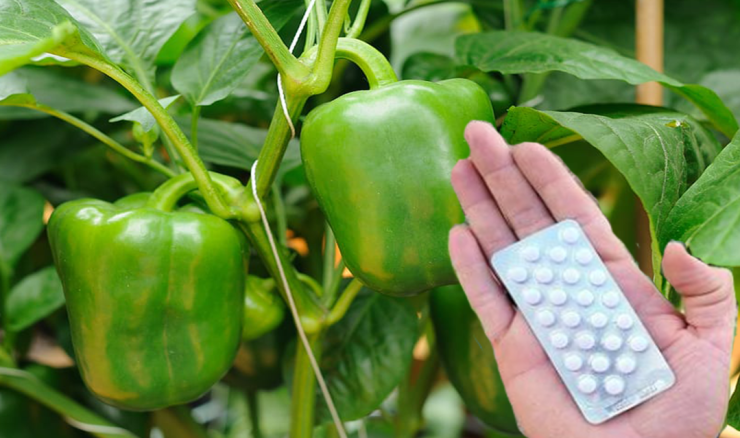Growing peppers in pots at home can be rewarding. Here’s a guide to ensure a bountiful pepper harvest:
Materials Needed:
Large pots or containers (at least 12 inches deep)
Quality potting soil
Pepper seeds or seedlings
Watering can or hose with a gentle nozzle
Fertilizer suitable for vegetables
Support stakes (if growing taller varieties)
Steps to Grow Peppers in Pots:
1.Pot Selection:
Choose containers with good drainage holes at the bottom to prevent waterlogging.
2.Soil Preparation:
Use well-draining, nutrient-rich potting soil. Mix in compost or aged manure to enhance fertility.
3.Planting:
Plant seeds or seedlings in the pots. If using seeds, plant them about ¼ to ½ inch deep in the soil. If using seedlings, transplant them carefully into the center of the pot.
4.Watering:
Keep the soil consistently moist but not waterlogged. Water deeply when the top inch of soil feels dry. Avoid overwatering as it can lead to root rot.
5.Sunlight:
Peppers need plenty of sunlight. Place the pots in a location that receives at least 6-8 hours of direct sunlight per day.
6.Fertilization:
Use a balanced fertilizer or one specifically formulated for vegetables. Apply it according to the package instructions, usually every few weeks during the growing season.
7.Pruning and Support:
Pinch off the first few flower buds to encourage the plant to focus on growth. Provide support stakes for taller varieties to prevent them from toppling over when laden with peppers.
8.Pest and Disease Management:
Monitor your plants for signs of pests or diseases. Treat any issues promptly to prevent them from spreading.
9.Harvesting:
Peppers can be harvested when they reach their mature color and size. Use scissors or pruning shears to cut the peppers from the plant, leaving a small part of the stem attached.
10.Overwintering (Optional):
In cooler climates, consider bringing the pots indoors before the first frost to extend the harvest. Trim the plants back and provide them with adequate light indoors.
Tips:
Ensure proper ventilation and air circulation around the plants.
Avoid excessive use of nitrogen-rich fertilizers, as they can promote foliage growth over fruit production.
Mulch the soil to retain moisture and suppress weeds.
Different pepper varieties have different requirements, so choose ones that suit your climate and preferences.
With proper care, consistent watering, adequate sunlight, and attention to their specific needs, peppers can thrive and produce abundantly in pots, offering you a rewarding homegrown harvest.






Add comment